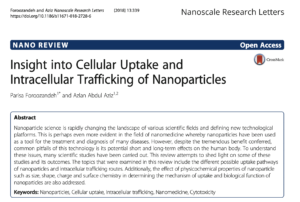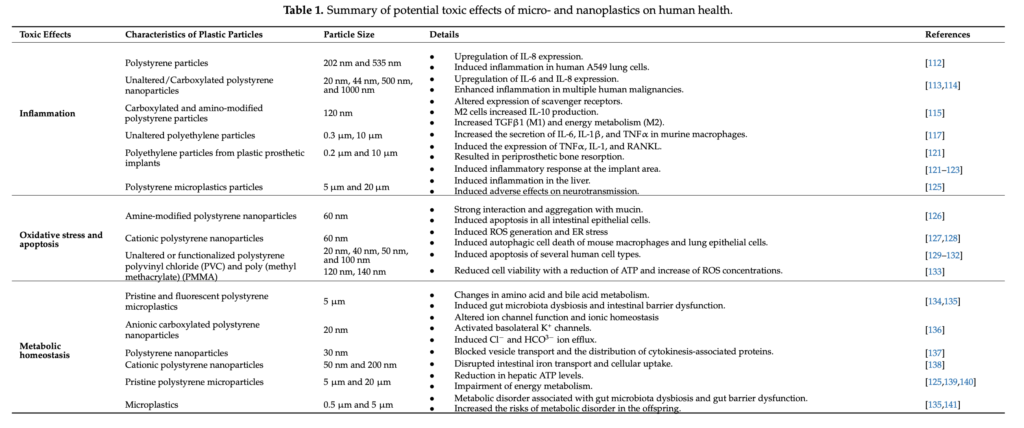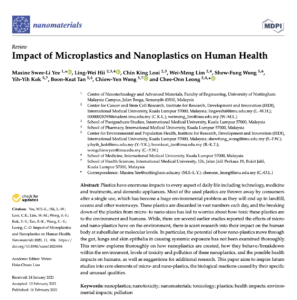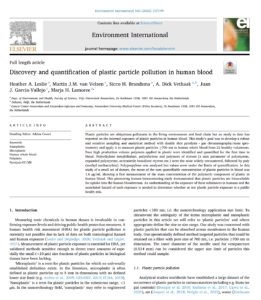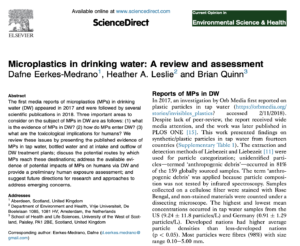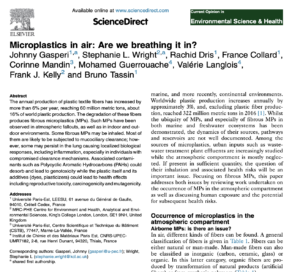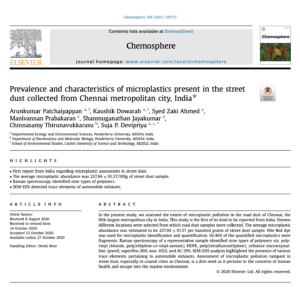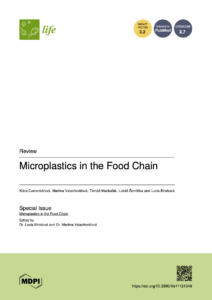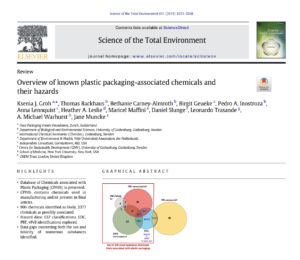How Are Chemicals That Are Associated with Plastics Classified?
There are various levels of classification and different entities that assign labels to chemicals.
We often hear that a particular chemical is “classified as an endocrine disruptor” by “xyz” entity, but without proper context these statements can be misleading. This guide will provide you with context around how chemicals get their classifications.
Types of Classifications
Chemicals can be labeled or classified in various ways:
General Category – A chemical can be classified generally, such as “an environmental hazard” or “a health hazard”.
More Descriptive Category – Within the category of health hazard, a chemical can be identified in various ways such as “acute toxicity” or “carcinogenicity”.
Additional Labels – Chemicals can also be described by the specific impact they have on humans or the environment. For example, a chemical may be labeled as an “endocrine disruptor”.
Modifiers – For every description a chemical can be classified by the confidence experts have in that classification. For example, a chemical can be classified as a “known carcinogen” or “suspected carcinogen”.
Who Classifies Chemicals?
Chemicals are classified by various entities, primarily governments and NGOs.
Systems: How Chemicals Get Classified
There are various systems and organizations that classify chemicals, mostly to guide governments in regulating those chemicals.
The international standard for classifying chemicals is the Globally Harmonized System (GHS). The GHS helps various entities communicate about hazardous chemicals using a common language. Using GHS standards allows various countries and organizations to share information easier than if they all had their own systems.
Globally Harmonized System (GHS)
GHS is an international standard for classifying and labeling chemicals. It categorizes chemicals based on their health, physical, and environmental hazards. GHS provides a basis for worldwide harmonization of rules and regulations on chemicals, contributing to the protection of human health and the environment, while facilitating trade.
GHS was developed and is managed by the United Nations. The system is continually updated and revised to reflect new scientific data and changes in the regulatory landscape. The United Nations Economic and Social Council’s Committee of Experts on the Transport of Dangerous Goods and on the Globally Harmonized System of Classification and Labelling of Chemicals is responsible for maintaining and updating the GHS. This committee meets regularly to review and update the GHS, ensuring it remains a relevant and effective tool for hazard communication worldwide.
The GHS also provides a standardized approach for hazard communication, including labels with hazard symbols (pictograms), signal words (such as “Danger” or “Warning”), hazard statements (describing the nature and degree of the hazard), and precautionary statements (measures to minimize or prevent adverse effects).
Various countries around the world have developed their own chemical classification systems, often aligned with the GHS.
Notable Classification Systems
- United States: The Occupational Safety and Health Administration (OSHA) adopted the GHS through its Hazard Communication Standard (HCS). This system requires manufacturers, importers, and distributors to classify chemicals and communicate their hazards through labels and safety data sheets.
- Canada: Health Canada’s Workplace Hazardous Materials Information System (WHMIS) aligns with the GHS, ensuring that hazardous products are properly classified and that workers receive consistent and comprehensive information.
- Japan: Japan has adopted the GHS, and its classification system is administered by the Ministry of Health, Labour, and Welfare (MHLW), the Ministry of Economy, Trade and Industry (METI), and the Ministry of the Environment (MOE).
- Australia: The National Industrial Chemicals Notification and Assessment Scheme (NICNAS) is responsible for the classification of chemicals in Australia. The system, known as the Australian Code for the Transport of Dangerous Goods by Road and Rail, aligns with the GHS.
- China: China’s State Administration of Work Safety (SAWS) has implemented a chemical classification system that aligns with the GHS. This system is used for the classification, labeling, and packaging of chemicals.
- European Union (EU): The EU has a GHS-aligned CLP (Classification, Labelling and Packaging) Regulation and additional regulatory frameworks such as REACH (Registration, Evaluation, Authorisation, and Restriction of Chemicals) for chemical management.
- South Korea: The Act on Registration and Evaluation of Chemicals (K-REACH) and the Chemical Control Act (CCA) in South Korea align with the GHS for the classification and labeling of chemicals.
- Brazil: Brazil has adopted the GHS under its National Chemical Safety Program, which is managed by multiple governmental bodies including the Ministry of Work and Employment.
Important Types of Classifications
The GHS includes several types of classifications designed to provide a consistent approach to identifying the intrinsic hazards of chemical substances and mixtures. The main categories of GHS classifications are:
Physical Hazards: These are hazards arising from the physical properties of a chemical. This category includes:
- Explosives
- Flammable Gases, Aerosols, Liquids, and Solids
- Oxidizing Gases, Liquids, and Solids
- Gases Under Pressure
- Corrosive to Metals
- Self-Reactive Substances and Mixtures
- Pyrophoric Liquids and Solids
- Self-Heating Substances and Mixtures
- Substances and Mixtures which, in contact with water, emit flammable gases
- Organic Peroxides
Health Hazards: This category addresses hazards that result in an adverse effect on health, particularly after exposure. It includes:
- Acute Toxicity (with different routes of exposure like inhalation, skin contact, and ingestion)
- Skin Corrosion/Irritation
- Serious Eye Damage/Eye Irritation
- Respiratory or Skin Sensitization
- Germ Cell Mutagenicity
- Carcinogenicity
- Reproductive Toxicology
- Target Organ Systemic Toxicity – Single and Repeated Exposure
- Aspiration Hazard
Environmental Hazards: These are hazards that chemicals might pose to the aquatic and terrestrial environment. This includes:
- Hazardous to the Aquatic Environment (Acute and Chronic)
- Hazardous to the Ozone Layer (although this is not covered under GHS but is often considered under environmental hazard regulations)
Chemical Classification Outside The GHS
Regulatory bodies and scientific organizations also classify chemicals based on their attributes and/or specific effects they can have on humans or the environment.
Here are some common examples:
Endocrine Disrupting Chemicals (EDCs): These are chemicals that can interfere with the endocrine (hormone) system in humans and wildlife. Identification of EDCs involves specific tests and assessments.
Who classifies EDCs?
- Regulatory Agencies:
- European Union (EU): The EU has established specific criteria for identifying EDCs within its regulatory frameworks, such as REACH (Registration, Evaluation, Authorisation, and Restriction of Chemicals) and the Biocidal Products Regulation. The European Chemicals Agency (ECHA) and the European Food Safety Authority (EFSA) play significant roles in assessing and identifying EDCs within the EU.
- United States Environmental Protection Agency (EPA): The EPA conducts assessments and regulates chemicals that may act as endocrine disruptors under various environmental laws. The EPA’s Endocrine Disruptor Screening Program (EDSP) is a significant initiative in this area.
- International Organizations:
- World Health Organization (WHO) and United Nations Environment Programme (UNEP): These organizations collaborate on research and publications regarding EDCs, contributing to global understanding and guidelines for identifying and regulating these chemicals.
- Scientific and Research Institutions: Various independent scientific institutions and researchers conduct studies to identify and understand the mechanisms by which chemicals may act as endocrine disruptors. Their research contributes to the body of evidence used by regulatory bodies for classification.
- Non-Governmental Organizations (NGOs): Some NGOs, such as the Endocrine Society and Environmental Working Group (EWG), actively participate in research, advocacy, and education regarding EDCs, and they often collaborate with regulatory agencies and scientific communities.
Persistent, Bioaccumulative, and Toxic (PBT) and Very Persistent and Very Bioaccumulative (vPvB) Assessments: These classifications are for chemicals that persist in the environment and accumulate in living organisms, posing long-term risks to health and ecosystems.
Who classifies PBTs and vPvBs?
- European Chemicals Agency (ECHA): Under the European Union’s REACH (Registration, Evaluation, Authorisation, and Restriction of Chemicals) regulation, ECHA plays a crucial role in identifying and regulating PBT and vPvB substances. Chemicals are evaluated based on criteria outlined in REACH, and those meeting the PBT/vPvB criteria are subject to additional regulatory measures.
- United States Environmental Protection Agency (EPA): In the United States, the EPA assesses chemicals for PBT characteristics under various environmental laws, including the Toxic Substances Control Act (TSCA). The EPA uses scientific data and risk assessment methodologies to determine whether chemicals meet the criteria for being classified as PBT or vPvB.
- Other National and Regional Regulatory Bodies: Various countries have their regulatory frameworks and agencies responsible for chemical classification and management. These bodies may adopt criteria similar to those of REACH or TSCA or have their unique assessment protocols.
- International Conventions: Global agreements like the Stockholm Convention on Persistent Organic Pollutants aim to identify and control PBT substances. Signatory countries commit to taking measures to eliminate or restrict the production and use of chemicals listed under the convention.
